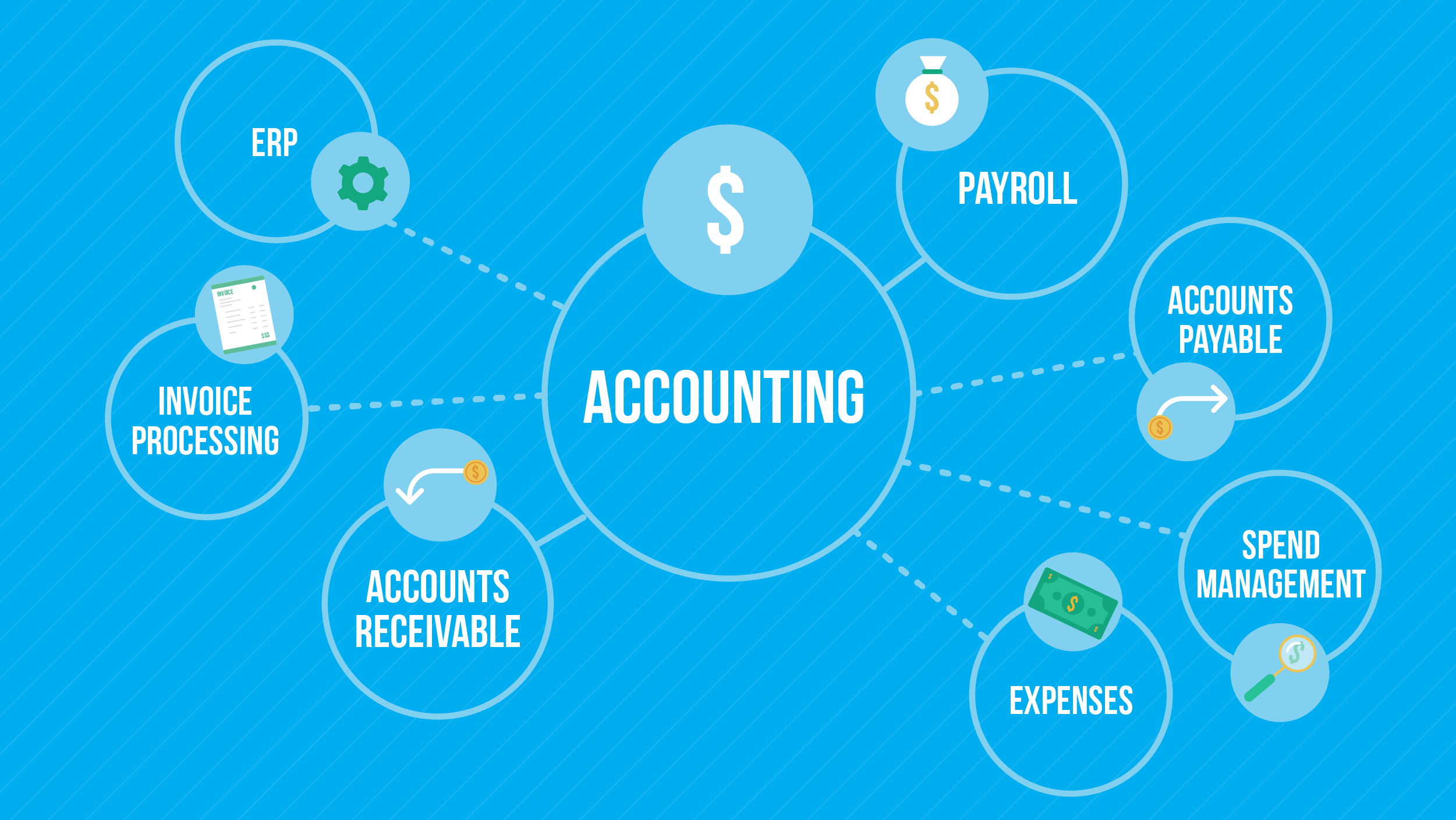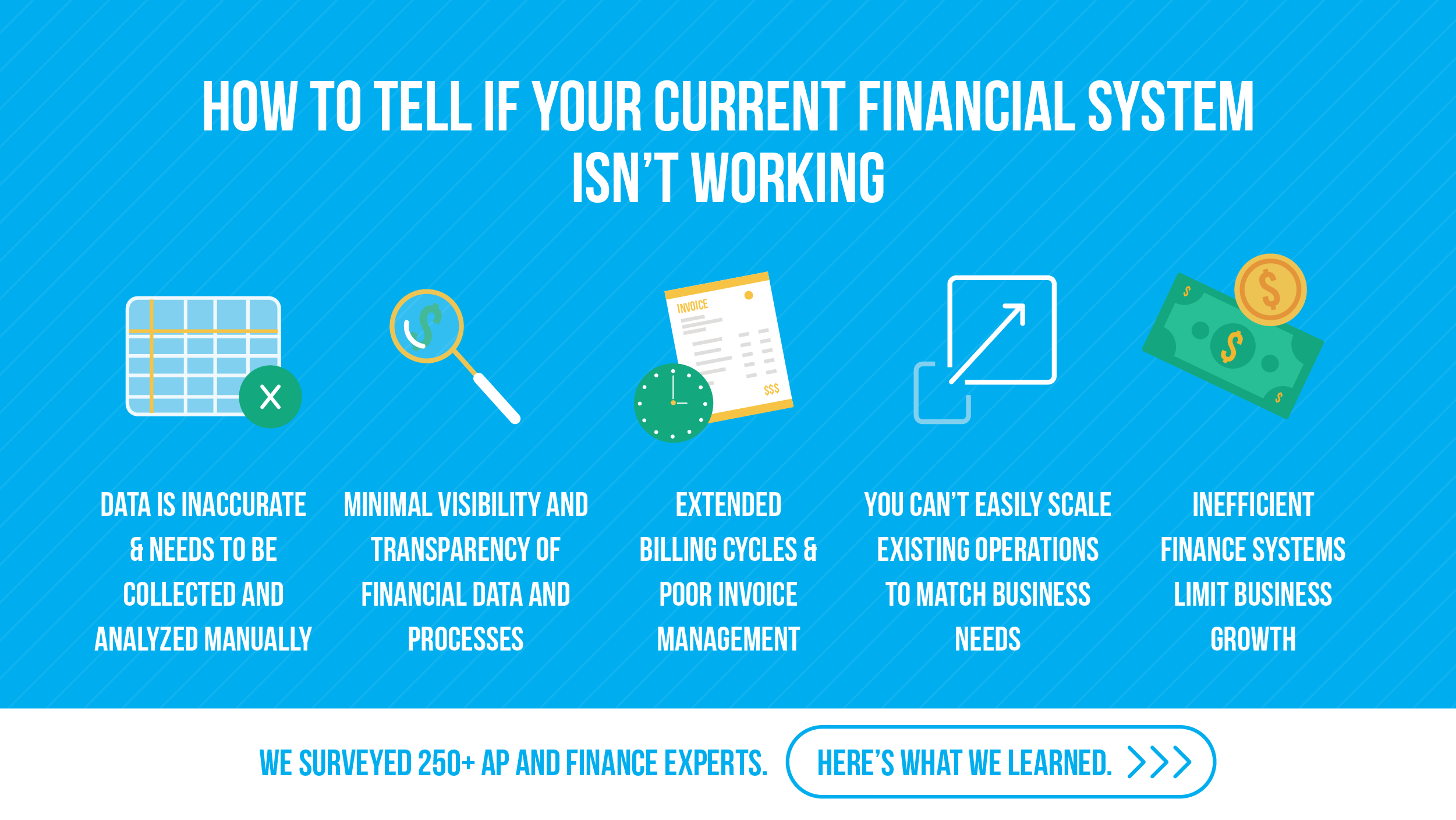For CFOs: How to Scale Your Finance Tech Stack for Growth

As your business grows, so will the amount of data and money your financial systems need to manage. Although hiring more people or outsourcing accounts payables and creating more Excel spreadsheets can be tempting, that path will only lead to a dead end. Manual processes can only scale so far before they become time-consuming, complicated, and inefficient.
Many companies try to solve the problem by implementing software and SaaS solutions as needed, but this will also lead to a dead end. Finance teams can end up with an awkward combination of systems and manual processes that probably don’t work well together.

For finance leaders, the challenge is clear: grow AP, payroll, and accounting systems to effectively manage the ever-increasing flow of financial data and money within the organization. For many companies, this is easier said than done. Even if a company isn’t growing, the amount of financial data it must process – credit cards, invoices, expense reports, payroll, reconciliations – can still grow. Already-overwhelmed finance teams hobbled by inefficient financial systems can scarcely afford the time and resources to handle the extra workload.
CFOs need to find scalable solutions that can streamline business processes and manage data and cash flow to meet this challenge. That means they need to:
- Understand their current financial technology needs
- Identify where their existing financial systems and processes need improvement
- Forecast the company’s future financial needs
- Choose the appropriate tool and strategy for the job.
This article shows you how to scale your finance tech stack for growth. We cover the benefits of implementing scalable, automated financial software and SaaS solutions, choosing the right solution for your business, and getting started transforming your current systems and processes into scalable ones.
What is a Scalable Finance Technology Stack?
A financial technology stack combines software, SaaS solutions, and technologies to enable businesses to automate their financial activities. The finance tech stack streamlines processes, integrates accounting and other business systems, and collects, classifies, and analyzes financial data for budgeting, planning, and forecasting.
A scalable tech stack has the flexibility and capacity to expand or add capabilities, features, and throughput to handle an increase in the amount of data and money it needs to manage. A scalable solution grows with your business, so you are never left in a situation where inefficient financial systems are holding your business back.

How to tell if your current financial system isn’t working
- Data is inaccurate and needs to be collected and analyzed manually
- Minimal visibility and transparency of financial data and processes
- Extended billing cycles and poor invoice management
- You can’t easily scale existing operations to match business needs
- Inefficient finance systems limit business growth
Although every company, from startup to established business, has its unique mix of financial systems to handle cash and financial data flows, most companies use a combination of these core finance tech systems:
- Accounting
- ERP
- Spend management
- Expense and invoice management
- Accounts receivable and billing
- Accounts payable and payments; and
- Payroll
It falls to the CFO and finance team to build the right finance tech stack for each company’s needs. That means finding software solutions and management systems that align with the company’s business goals, implementing and integrating them in the organization, and maintaining and scaling them as business needs evolve.
The first step is to look at some of the benefits of implementing a scalable financial technology stack in your business.
Why You Need a Scalable Finance Tech Stack
A correctly implemented tech stack gives your business the freedom to grow by giving your finance teams the capability, capacity, and flexibility to proactively manage your finances. While it’s true that automation saves time and money by making finance teams more efficient and effective, it brings some big benefits you may not realize.
Automation gives CFOs visibility and transparency for growth
Tech stacks let CFOs and finance teams see financial data, cash flows, and consolidations in real-time, a major advantage for decision-making. With a clear picture of how systems are performing, finance teams can easily model and predict growth scenarios and develop a plan to scale the tech stack as needed.
Quickly respond to market conditions
A scalable finance tech stack gives your business the flexibility to respond positively and rapidly to changes in your market. You can easily adapt and scale up to meet changing customer needs, take on new (and larger) opportunities, and respond to competitors. Automation also shortens product development and launch cycles and accelerates entry into new markets.
Improve cash flow and reduce risks
Real-time data reporting and analysis lets CFOs know precisely how much money the business has on hand and where that money is going. It also enables controllers and finance teams to reduce risks by quickly detecting errors and fraud.
These benefits are just the tip of the iceberg. Many of the components of an integrated finance tech stack have capabilities and features that can benefit your business. For example, invoice processing automation can save time and money by scanning and entering paper invoices. Automation can also improve supplier relations through shorter payment cycles, and as any procurement team can tell you, a happy supplier is a good supplier.
As your business digs deeper into planning and implementing a financial technology stack solution, you will discover more “hidden” benefits. So, where do you start?
How to Choose a Scalable Finance Tech Solution
Choosing and implementing a scalable financial technology solution is a major project that will require the involvement of almost every team in your business. To get you started, here are the basic steps:
Start by understanding your current financial systems and future needs
Begin the process by knowing where you are right now. Review your current financial systems and workflows. Speak to all the teams involved to identify all the pain points. At a minimum, these will be the major cost centers like AP, human resources, and procurement. Map existing processes and inventory existing systems like accounting software, ERP, payroll, CRM, and expense management. Highlight what’s working, what isn’t, and where your business currently faces cash flow problems or financial risk.
Step two of this process is a company-wide financial planning activity to assess planned future growth and revenue, expansion plans, the competitive landscape, and technology lifecycles. Identify any areas where you anticipate your business will need to adapt its financial systems in response to change. For example, you could consider the impact of remote and hybrid work and integrating mobile devices (and employee-owned devices) into your IT ecosystem.
Build a strategy for automation and implementation
Once you’ve collected data on your current situation and future needs, build a strategy to implement a scalable finance stack. Start by deciding which processes you want to automate and when to automate them. Then create a plan to make it happen. The plan includes vendor selection, implementation and integration with existing business systems, and technology roadmaps for future scalability.
Identify and select fintech vendors
With your strategy in hand, identity and talk to financial technology providers about solutions and pricing. Here are a few things to keep in mind when talking to vendors:
Scalability
Is the tool easily scalable? Can the vendor provide real-world examples of scalability?
Degree of automation
Is the tool effective at automating the process it replaces? What is the vendor’s track record? What have been the challenges, and how has the vendor met them?
User-friendliness
Is the tool easy to use and includes dashboards? Does the vendor provide training, and can users be onboarded without downtime?
Compliance
Can the tool help me comply with audit requirements and regulations? Does it provide digital audit trails?
Mobility and compatibility
Does the tool have mobile apps with complete functionality on different devices or across operating systems?
Integration with business systems
Does the tool integrate with existing systems? Does the vendor provide a clear path to integration?
Support
What is the vendor’s level of support? Do they have a dedicated team for your business?
Analytics
Does the tool provide analytics? What information does it provide?
Once you’ve chosen one or more vendors, develop a plan to implement the solution. Consider selecting an iterative approach to implementation rather than a disruptive all-at-once approach. Your company may face a steep learning curve, so taking a step-by-step approach will give you the time to understand how the solution works and adapt your existing processes for automation.
Build a Scalable Fintech Stack with Stampli
Stampli’s end-to-end AP automation platform gives you full control and visibility over all your corporate spending, from invoices to AP credit cards to payments—all in one place. Customer reviews place Stampli as the Leader in the G2 Grid® for AP Automation software and #1 in Usability, Support, Implementation, and Results.
Take control over invoice and bill processing with smart, intuitive, and actionable AP Automation from Stampli. Talk to one of our financial technology experts today!


